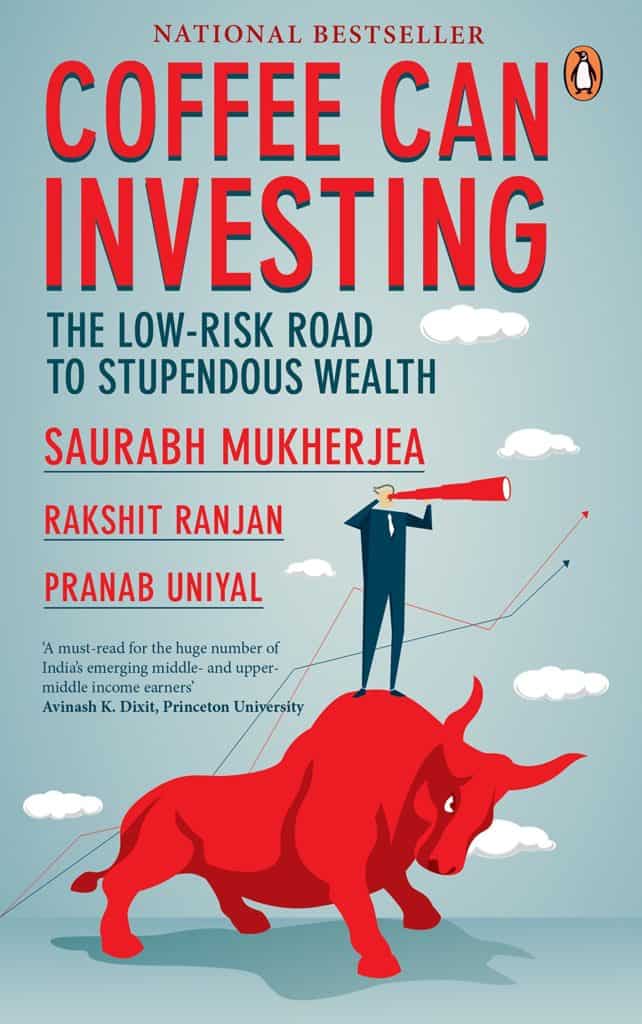Few books have caught the interests of the Indian investing public as well as the book ‘Coffee Can Investing’ by Saurabh Mukherjea and others.
Fewer still investment methods have found a fan following as the stock picking process recommended in this book.

Admittedly, I am a bit late to this party. Nevertheless, when I picked up the book and read through it, I could see why investors were enamored with it. The sub-title of the book captures the lure well – ‘The low-risk road to stupendous wealth’. Who would not find that enticing?
There are few problems with the book – more on that in a bit – but, the book is definitely a good read and worthy of recommendation. Please note that I am recommending the book, and not necessarily the investment process detailed in there. Please read and adapt it to your needs as you see fit. (Side note: Please don’t ask when PrimeInvestor is going to come up with a CC portfolio – we have our own philosophy and methods 🙂 )
The book’s premise is beguilingly simple – pick stocks that have a proven track record (of 10 years or more) of growing their revenues and have high return on capital employed (ROCE). The formula undergoes some changes when applied to financial services companies (looking at loan growth). But that is the simple step.
The tougher part may be to hold on to this portfolio without disrupting it for a period of 10 years. No profit booking in peak markets, no discarding of ‘losers’ – no activity in it at all. If you read the commentaries on this book, you will find many people taking issue with this hands-off approach. For example, when companies have governance issues as they often do, should we still keep holding? Or get out and find a new CC stock? That’s a tough call to make.
But Saurabh and co present this method with conviction and by backing the conviction with data from the past. The book is replete with tables of returns from various such portfolios created at different points in time, all showing the merits of both the stock picking methods and the virtue of patient holding.
The book also touches on some tangentially related topics along the way – about the Indian real estate market, on mutual fund expenses, investing in small-caps etc. Most of you, I think, will skim along these chapters, as I did. There is not much new there.
The book is a bit outdated though, in some respects. The authors keep mentioning that long term capital gains on equity investments is zero. We all know that since 2018, that has not been the case. Similarly, they advocate, in a specific case, investing in the dividend option of a mutual fund, which is also an anachronism for today’s world. Given that it’s been 3+ years since these changes came to effect, one would have thought that the book would have seen an edited version published.
And while they recommend mutual funds for small-cap investments, they provide little guidance on how to go about picking those funds (of course, PrimeInvestor subscribers have ready access to the top funds they should invest in).
Nevertheless, I liked this book for these reasons:
- The stress on the virtues of patience in long-term investments – which is the achille’s heel of investors in general and Indian investors in particular.
- The commitment to a diversified portfolio – including other non-equity investments as well.
- The emphasis on looking at the costs of investing – like expense ratio, brokerages etc.
And, I have to mention a word about the writing style – it is top-notch. The book makes for an easy read – not necessarily a quick read, since there are many concepts to be digested on the way.
Readers of this book will come out with a better understanding of the Indian equity markets and will be more informed about stock-picking methods. And just those make the book a worthy read.
Coffee Can Investing in Amazon
(Not an affiliate link)


